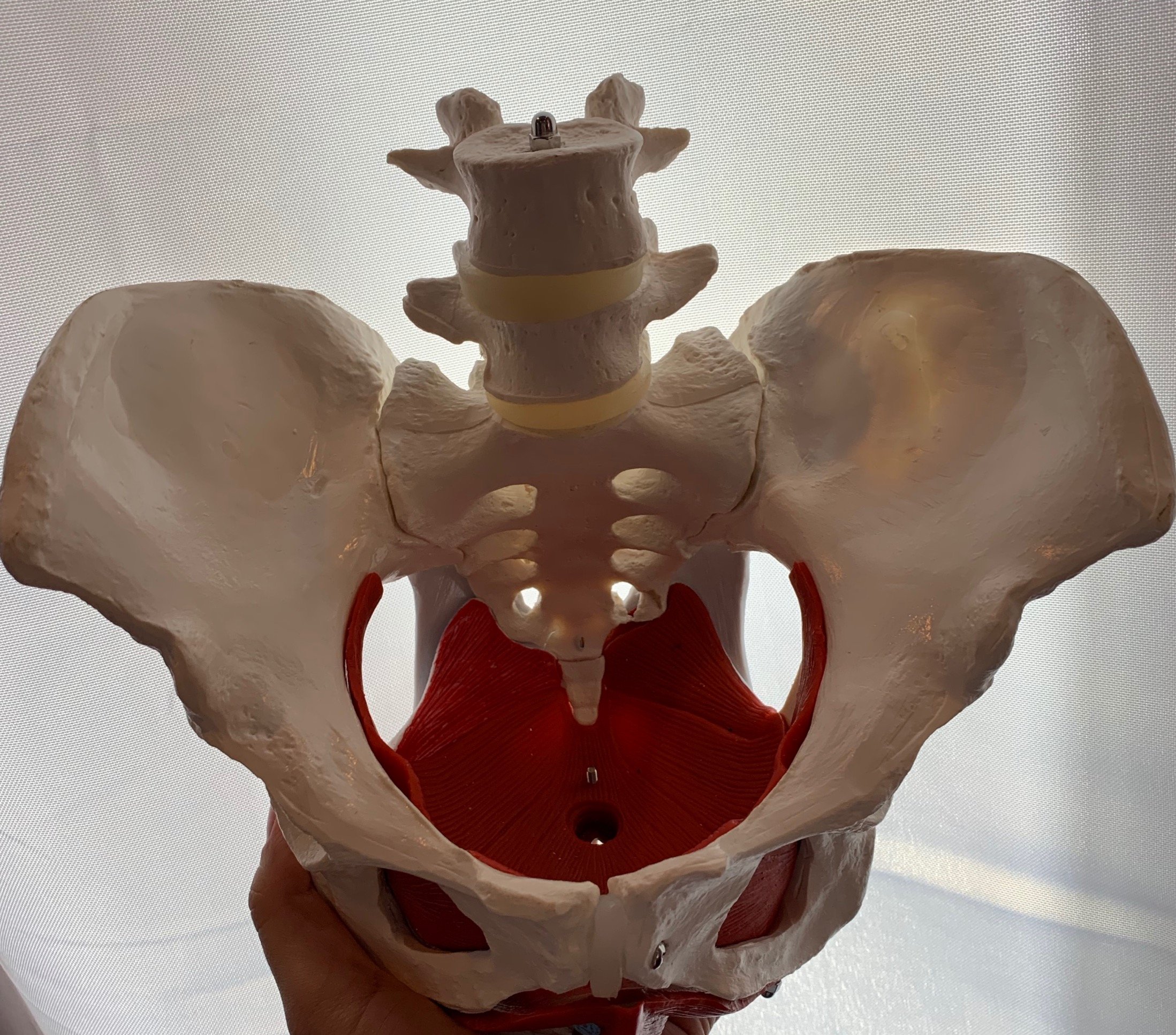Many people are beginning to hear a lot more about the pelvic floor muscles. There is more information that is available. So, what is pelvic floor dysfunction?
There are many things that can happen to the pelvic floor. No, you don’t have to have children to have a pelvic floor dysfunction. I have women who come to me saying they have had leaking with running, jumping, or straining during a heavy lift and they have never had children. I have women who have had pain with intercourse, pain with tampon use, pain with jumping, pain with running…you get the picture. While not all of these symptoms are only pelvic floor dysfunction symptoms, the pelvic floor muscles could be a part of the underlying issue.
Sometimes the muscles in the pelvic floor, the sling or basket of muscles that sit at the base of your pelvis, can become overactive and become tight. They can feel tense and may be a source of pain in the hips, low back, with certain activities, and just be uncomfortable. If the muscles of the pelvic floor are not able to fully relax, then it can lead to dysfunction. You may have trouble fully emptying your bladder, may feel pain and discomfort with activities.
On the flip side, sometime the muscles of the pelvic floor are stretched or weak. This can cause dysfunction as well. Sometimes women report feeling as if there is increased pressure downward, as if “something is falling out” or they report leaking with activities or urine leaking all the time. This could be a sign of pelvic muscle dysfunction associated with muscle weakness or uncoordinated muscle contractions.
So, what do you do about it? Well…first you must get an accurate understanding of your symptoms and what is going on. Keep track of when you have your symptoms, how often, what happened before, during, after your symptoms, and what types of symptoms you are having. This will give you a better idea of what may or may not be leading to the pain, discomfort, or leaking symptoms that you are having.
The next step would be to have an assessment by a pelvic floor physical therapist. This could be beneficial in understanding what is going on with your body. And, no, Kegels are not always the answers. Sometimes, the body needs to learn to relax and coordinate the muscles of the pelvic floor. Or, as we are learning, being able to do a Kegel correctly is important, because many women are not doing them correctly. Sometimes the muscles in the hips and low back are also weak and need attention to help with the pelvic floor function well. Since the hips and pelvic floor are deeply connected, it is important to understand the inner working of your body and what may be causing your particular symptoms.
Each woman’s body is put together a little differently, so a one size fits all answer is not going to work. Having an individualized plan that fits your needs, your lifestyle, and your time is usually what works best. We are here to help you get answers!

